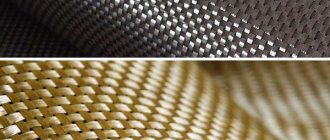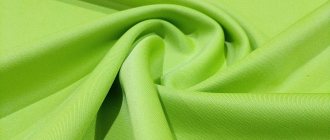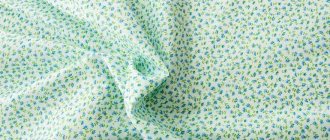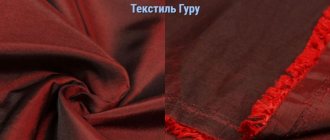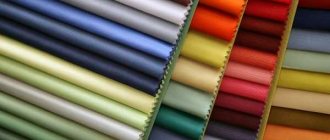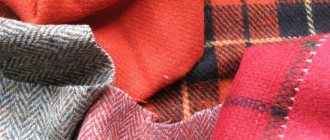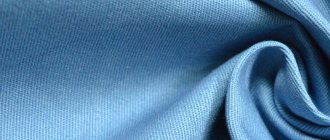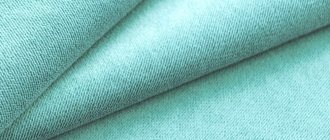All materials from which travel equipment is made consist of fibers. Fibers, in turn, differ from each other in properties, chemical and physical composition, structure, which determines the qualities of the fabrics that allow our equipment to have the properties that we expect from them in a given situation.
The most basic feature on the basis of which all fibers, and, consequently, fabrics are divided, is origin.
There are:
– natural fibers
These include fibers of natural origin (animal, mineral, plant);
– chemical fibers
Their main difference is that the manufacturing process takes place in production. And in turn, chemical fibers include:
● synthetic . They are obtained as a result of the synthesis of low molecular weight compounds of natural origin (ethylene, methane, phenol and others). A prerequisite is the occurrence of a polymerization reaction (the combination of monomer molecules into large polymer molecules) or polycondensation (the process of synthesizing polymers from polyfunctional compounds). The main raw materials for the production of synthetic fibers are products from the processing of oil, coal or natural gas.
● artificial . Such fibers are obtained from high molecular weight compounds of natural origin, which are formed naturally during the growth of fibers, for example, cellulose, fibroin or keratin. Staple, viscose, acetate, modal are examples of such artificial fabrics. Currently, these fabrics can almost completely replace natural fabrics due to their excellent consumer properties - the material is highly breathable, dries quickly and is tactilely pleasant.
Natural fibers of plant origin
The most common fibers of this origin are linen and cotton. Let's take a closer look at the features of their processing and the process of converting fibers into fabrics.
A. Cotton fibers
These are the fibers on the surface of the seeds of the cotton plant.
After being collected in the fields, the seeds go to cotton gin plants, where they are cleaned of impurities, and then the fibers themselves are separated from the seeds, pressed and packaged.
The cotton fiber itself is a tube with a channel inside. Moreover, the fiber twists several times around its axis.
Cotton fabric is characterized by:
– high strength;
– heat resistance (resistance to high temperatures up to 140 degrees);
– hygroscopicity is about 20%, which is an average;
– a small amount of elastic deformation, which is why cotton products wrinkle quite heavily;
– high resistance to alkalis;
– resistance to abrasion.
Cotton fabrics include taffeta, satin, calico, poplin, chintz, thick flannel, thin cambric, chiffon, and denim. This fabric is often used to make linings for sleeping bags and liners, summer suits for hunting and fishing, and many other products used for outdoor activities.
B. Flax fibers
The source of this fiber is flax stalks.
First, they are soaked so that the microorganisms that appear as a result of this process begin to destroy the tissue of the stems and separate the bast bunches. Then these soaked stems are crushed, ruffled, scratched (yes, this terminology has come to us from ancient times) and is obtained as technical fiber.
What are the characteristics of linen fabrics:
– durable;
– wear-resistant;
– high degree of hygroscopicity;
– dry quickly;
- wrinkles a lot. Therefore, polyester fibers are most often added to linen fabric.
Why natural wool is so valued: properties and characteristics
Natural wool has high heat-protective properties because it has low thermal conductivity. The material is elastic and pliable, able to hold its shape well and wrinkles slightly. In addition, the fabric is highly breathable and hygroscopic. In this case, the swollen wool always takes its original shape after drying.
The fabric drapes beautifully. It is easy to work with it, since it is not capricious when cutting and sewing. In most cases, the edges of the parts do not crumble and therefore do not require additional processing.
Interesting. Wool fabric has not only warming, but also healing properties. Woolen scarves and shawls have long been tied to the head to get rid of headaches or toothaches.
When worn for a long time, wool clothing does not stretch on the elbows and knees and does not form creases.
Natural fibers of animal origin
These include wool and silk.
A. Wool fibers
Wool is the hair of animals. They mainly use wool from sheep (95%), camels, llamas, alpacas, and goats.
But before wool can be made into fabric, it is subjected to lengthy cleaning, sorting, washing, drying, and only then it is sent to textile production. Sheep wool consists of four types of fibers:
- fluff. It is a very thin, soft, durable fiber.
– transitional hair. This is a thicker fiber compared to down.
– awn. The fibers of this type of wool are coarse and tough.
– dead hair. Because these fibers are punctured by lamellar scales, they become thick, straight and coarse.
Such fabric, for example, as cloth, used in the production of outerwear for hunting, is obtained due to the property of woolen fabric - felting. In addition, it has very low thermal conductivity, which makes it popular in the production of winter equipment.
B. Silk fibers
These are long, thin threads that the silkworm caterpillars secrete to create a cocoon. Silk threads are light and strong - their strength is equal to the strength of steel wire of the same diameter. Silk is hygroscopic and dries quickly.
In travel equipment, silk fabrics are used, for example, in some sleeping bag liners (liners).
Obtaining wool fabrics
Wool is the hair of animals. Raw materials are obtained in various ways. On an industrial scale, they resort to shearing the animal or shaving off the hair from the skin. At home, needlewomen comb out wool and even collect it during the natural shedding period.
In addition to animal wool obtained by shearing, recovered (recycled) wool, skim milk and waste from wool production are used as raw materials.
After shearing, the raw materials are sorted, assessing the fineness and length of the fibers. Then the labor-intensive process of cleaning the wool begins. It is loaded into a machine that feeds raw materials in portions into the first machine that removes burrs. In the second machine, the wool is cleaned of debris and tangles. Next, it enters water tanks and passes through squeezing machines. At the final stage, the purified raw materials enter the drying apparatus.
After initial sorting, cleaning and washing, the raw materials are oiled to impart elasticity and re-processed. It includes cleaning, combing and twisting into wool strips, which are a kind of “semi-finished product” for the further production of yarn.
The fabric production process consists of preparatory stages and weaving itself.
As part of the preparation of warp threads, small skeins are wound into bobbins to increase length. During the warping process, they are wound in a certain order onto a warping roller. Then they are impregnated with adhesive and softening substances, that is, sizing is performed. The final stage of preparation is threading - threading the warp threads into the eyes. The weft threads are rewound onto forks, moistened and treated with emulsions to impart strength and elasticity.
After preparing the weft and warp threads, the fabric begins to be woven. The resulting fabric is subjected to finishing - exposure to a number of chemical and physical-mechanical influences in order to give it certain properties. Operations in this area can be very diverse, depending on the composition of the raw materials, the type of yarn and the structure of the raw material - the original fabric.
- Searing . Only some combed fabrics undergo the process to improve the relief or weaving pattern.
- Welding. Treatment with boiling water followed by cooling, due to which the fabric acquires a uniform structure.
- Flushing. Removing impurities and preparing for subsequent operations.
- Valka. The process during which tissue is compacted and its thickness increases. The fabric becomes soft, its heat-shielding properties, strength and wear resistance increase.
- Carbonization. Only pure wool fabrics are subjected to this process. The essence of the operation is to clean the fabric from cellulose impurities.
- Napping. Some types of fabrics are subjected to it to give a fluffy appearance, and at the same time increase softness and thermal protection.
- Wet decatification. Reminds me of the brewing process. It is used for combed and fine-woven fabrics to prevent creases.
- Colorful finishing. The material undergoes dyeing and printing (applying a color pattern).
- Drying and expanding. The final stages of finishing, during which the fabric is dried and aligned in width.
- Haircut and cleaning. Worsted fabrics are subjected to them. During the process, knots and protruding ends of fibers are removed from the front side.
- Finishing. Necessary for adding density and softness to light woolen fabrics.
- Pressing . This is done to compact the fabric and even out its thickness.
All fabrics, without exception, are subjected to final decatification—treatment with hot steam followed by cooling. Thanks to it, shrinkage of the material is prevented during sewing and use of the product.
Author:
Zakharova Nina Afanasyevna
I hope you like my article! If you find any shortcomings, just write to me about it! I am always ready for a conversation and will answer any questions you have, ask them!

